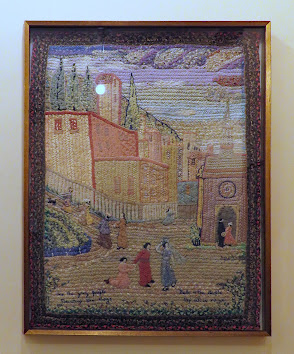While the communal experiment only lasted from 1848 to 1880, the community factories continued to be successful, producing animal traps, canned goods, and silk thread. In the early 1900s these product lines where discontinued and the company focused on their Oneida flatware line which had been started in 1890. The company was bought in 2005 by Liberty Tabletop and is the only US based manufacturer of flatware.
The Mansion House has been continuously occupied since 1862 when the original frame house was replaced with a brick structure. Several additions were added to surround a courtyard. Today the mansion is a museum but it's also a bed and breakfast with access to a lounge and public library. The large community rooms can be rented for events.
The rooms that are open to museum visitors include exhibit rooms, the community library, the nursery kitchen, the community hall, a typical bedroom, and a sitting room. The accessible entrance is in the courtyard. Follow the sidewalks to the south side of the mansion and the courtyard entrance. Once inside work your way to the front of the mansion and admissions desk. You'll be going through the guest area of the mansion and it's a little confusing. A small elevator accesses the second floor and a roll on lift provides access down a short flight of stairs to the exhibit rooms. This lift is not used often and when we visited the docent didn't know how to operate it so we thumped down the stairs. There's a short, steep, paved path down to the flower garden, We did not try any of the trails. 
Accessible parking spaces are in the rear of the mansion. We didn't know that and parked in the front which was fine. I don't know if parking in the rear is better. Mansion 43.06025, -75.6044




















I learned a lot from this post! Thanks for sharing.
ReplyDelete